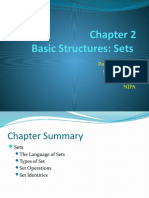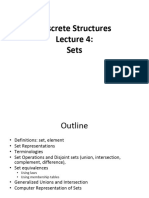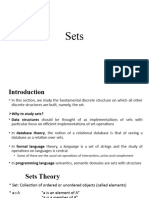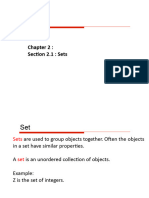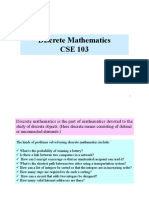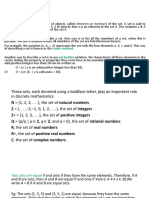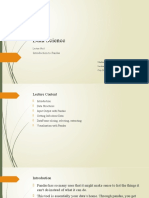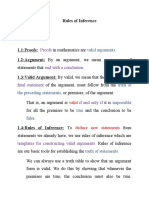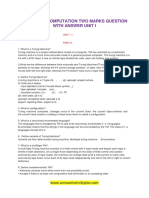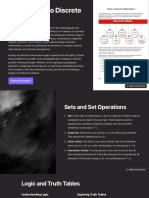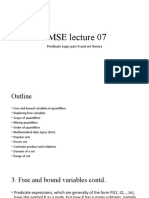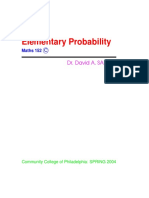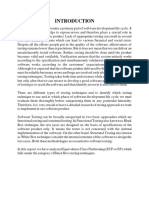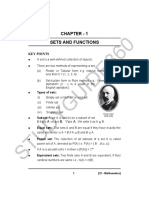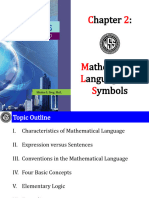0% found this document useful (0 votes)
444 views7 pagesExample::: The Set of Odd Positive Integers Less Than 10 Can Be Expressed by O (1,3,5,7,9)
The document defines basic set theory concepts including:
- A set is a well-defined collection of distinct objects.
- Two sets are equal if they contain the same elements.
- A set A is a subset of set B if every element of A is also an element of B.
- The power set of a set A is the set of all subsets of A. The power set has 2^n elements if the original set has n elements.
Uploaded by
Abdul BasitCopyright
© © All Rights Reserved
We take content rights seriously. If you suspect this is your content, claim it here.
Available Formats
Download as DOCX, PDF, TXT or read online on Scribd
0% found this document useful (0 votes)
444 views7 pagesExample::: The Set of Odd Positive Integers Less Than 10 Can Be Expressed by O (1,3,5,7,9)
The document defines basic set theory concepts including:
- A set is a well-defined collection of distinct objects.
- Two sets are equal if they contain the same elements.
- A set A is a subset of set B if every element of A is also an element of B.
- The power set of a set A is the set of all subsets of A. The power set has 2^n elements if the original set has n elements.
Uploaded by
Abdul BasitCopyright
© © All Rights Reserved
We take content rights seriously. If you suspect this is your content, claim it here.
Available Formats
Download as DOCX, PDF, TXT or read online on Scribd
/ 7


